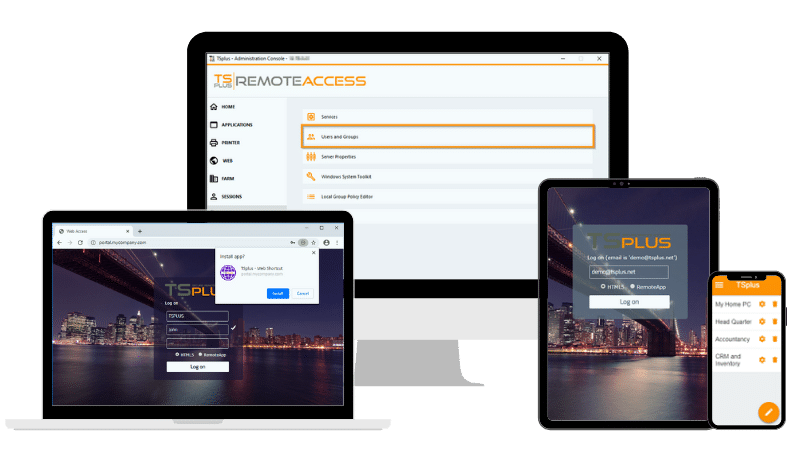Methods to Copy Files from Remote Desktop
Remote Desktop Connection offers several methods to transfer files, each suited to different scenarios. We will explore these methods in detail to provide a solid understanding of their technical implementations.
Enabling Drive Sharing via RDC
Drive sharing through RDC is a powerful feature that allows seamless file transfers by making local drives accessible on the remote machine.
Step-by-Step Implementation:
-
Initiate RDC: Open the Remote Desktop Connection application by typing
mstsc
in the Run dialog (accessible via
Win + R
).
-
Access Advanced Options: Click on
Show Options
to reveal the detailed settings.
-
Configure Local Resources: Navigate to the
Local Resources
tab. Here, you’ll see several options for redirecting resources from your local machine to the remote session.
-
Enable Drive Sharing: Click on
More…
under the
Local devices and resources
section. In the list that appears, select the drives or devices you wish to share by checking the corresponding boxes.
-
Connect and Verify: Proceed to connect to the remote desktop. On the remote machine, open
File Explorer
and navigate to
This PC
. The shared drives will appear under "Redirected drives and folders."
Technical Considerations:
-
Security: Be cautious when sharing drives, especially over unsecured networks. Limiting drive access to only necessary drives can reduce potential
security risks
.
-
Performance: Transferring large files over RDC can be bandwidth-intensive, especially with slower network connections. Ensuring both the local and remote systems are on a stable and fast network can mitigate performance issues.
Using Copy-Paste for Quick Transfers
Copy-pasting files directly between the local and remote desktop is the simplest method, particularly for smaller files.
How to Execute:
-
Local to Remote Transfer: On your local machine, navigate to the file you wish to transfer, right-click and select
Copy
or use the shortcut
Ctrl + C
.
-
Remote Desktop: Switch to the RDC session. Navigate to the desired directory, right-click and select
Paste
or use
Ctrl + V
.
Technical Limitations:
-
Clipboard Synchronization: This method relies on the clipboard functionality. If clipboard redirection is disabled or experiencing issues, file transfer may fail.
-
File Size: Copy-paste is best suited for small to medium-sized files. For larger files, drive sharing or FTP might be more efficient.
Using File Transfer Protocols
For environments requiring high-volume file transfers or enhanced control over the transfer process, using FTP (File Transfer Protocol) is a robust solution.
Setting Up FTP for RDC Transfers:
-
Install FTP Server: Install an FTP server application (such as FileZilla Server) on the remote machine. Configure the server by setting up users, permissions, and directories.
-
Configure Firewall: Ensure that the FTP server’s ports (default is 21 for control and a range for data transfer) are open in the firewall on the remote machine.
-
Connect via FTP Client: On your local machine, use an FTP client like FileZilla to connect to the remote FTP server using the IP address, username, and password configured earlier.
-
Transfer Files: Use the FTP client interface to upload or download files between the local and remote machines.
Technical Benefits:
-
Logging and Security: FTP allows for detailed logging of transfer activities and provides options for secure connections (using FTPS or SFTP).
-
Efficiency: FTP is optimized for transferring large files or large numbers of files, making it more efficient than RDC for bulk transfers.
Advanced Solutions for Enhanced File Transfer
While Remote Desktop Connection (RDC) provides basic file transfer capabilities, certain IT environments demand more advanced tools and techniques to optimize and secure the process, particularly when managing complex infrastructures or
sensitive data
. Leveraging such solutions can significantly improve efficiency, security, and overall user experience.
Leveraging TSplus Remote Access for File Transfers
For IT professionals overseeing multiple remote desktops or requiring enhanced security measures,
TSplus Remote Access
is a highly effective solution. It not only facilitates efficient file transfers but also integrates seamlessly into various IT workflows, providing a comprehensive toolset that addresses the limitations of standard RDC.
Key Features:
-
Multi-Session Management:
TSplus Remote Access
supports the simultaneous management of multiple remote sessions, which is particularly beneficial for IT administrators who need to transfer files across different servers or environments quickly. This feature reduces the need for multiple logins and streamlines the process, allowing files to be transferred between sessions without unnecessary delays.
-
Enhanced Security: In today’s cybersecurity landscape, protecting sensitive data during transfer is paramount. TSplus employs advanced encryption protocols to secure file transfers, ensuring that data remains confidential and tamper-proof during transit. Additionally, customizable access controls allow administrators to define permissions, restricting file transfer capabilities to authorized users only, which further mitigates security risks.
-
Ease of Use: Despite its robust feature set, TSplus is designed with user-friendliness in mind. The intuitive interface allows even less-experienced IT staff to execute complex file transfer operations with minimal training. This ease of use extends to configuration and deployment, where the solution can be quickly integrated into existing IT infrastructures without significant downtime or the need for extensive reconfiguration.
Implementation Considerations:
Integrating TSplus into your
remote access
strategy involves more than just installing software; it requires thoughtful planning to align with your organization’s specific needs. Factors such as network architecture, user access levels, and data sensitivity must be considered to maximize the benefits.
By doing so, TSplus can drastically reduce the time spent on file management tasks, allowing IT teams to focus on more critical aspects of their operations. Additionally, the scalability of TSplus ensures that as your organization grows, your remote access capabilities can expand without compromising performance or security.
Troubleshooting Common Issues
Even with robust tools, issues can arise during file transfers via RDC. This section addresses some of the most common problems and provides technical solutions.
Slow File Transfer Speeds
Issue:
File transfers via RDC can sometimes be slow, particularly over long distances or congested networks.
Solutions:
-
Optimize Network Bandwidth: Ensure both ends of the RDC connection have sufficient bandwidth. Consider using Quality of Service (QoS) settings on your network to prioritize RDC traffic.
-
Use FTP or TSplus: For large files, consider using FTP or TSplus, as these methods are optimized for handling large data volumes efficiently.
Remote Drives Not Showing
Issue:
Sometimes, despite enabling drive sharing, the drives do not appear on the remote desktop.
Solutions:
-
Check RDC Settings: Revisit the RDC settings and ensure that the correct drives are selected under Local Resources > More…
-
Reconnect the Session: Disconnect and reconnect the RDC session, as this can refresh the shared resources.
-
Verify Permissions: Ensure that you have the necessary permissions on both the local and remote machines to access the shared drives.
Clipboard Issues
Issue:
Clipboard synchronization can fail, preventing the use of copy-paste for file transfers.
Solutions:
-
Restart the RDC Session: This can often resolve clipboard sync issues.
-
Check Group Policy Settings: On the remote machine, ensure that clipboard redirection is not disabled by Group Policy settings.
Our solution : TSplus Remote Access
For IT departments seeking a robust and efficient solution,
TSplus Remote Access
provides an all-in-one toolset designed to streamline file transfers in professional environments. It simplifies the complexities of remote file management by offering advanced features such as multi-session management, enhanced security protocols, and an intuitive user interface. With TSplus, IT teams can handle file transfers seamlessly, ensuring productivity and data protection.
Conclusion
Copying files from Remote Desktop Connection is a critical task for IT professionals, with several methods available to suit different needs. From basic drive sharing and copy-paste to advanced solutions like FTP and TSplus, choosing the right method can enhance efficiency and security.
TSplus Remote Access Free Trial
Ultimate Citrix/RDS alternative for desktop/app access.Secure, cost-effective,on-permise/cloud









)



)
)
)
)



